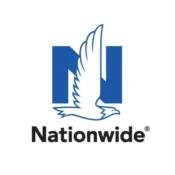Navigating the aftermath of a car accident in the United States can be overwhelming, especially when it comes to claiming car insurance. Understanding the right steps to take can make this process smoother and ensure you receive the compensation you deserve. This comprehensive guide will walk you through the process step by step.
Understanding Your Insurance Policy
Know Your Coverage
Before delving into the claims process, it’s crucial to understand your insurance policy. Familiarize yourself with your coverage types, such as liability, collision, or comprehensive insurance. This knowledge will give you a clearer picture of what damages are covered and the extent of your coverage.
Policy Limits and Deductibles
Be aware of your policy limits and deductibles. The policy limit is the maximum amount your insurance will pay, while the deductible is what you’ll need to pay out of pocket before your insurance kicks in.

Immediate Steps After the Accident
Safety First
Immediately after the accident, prioritize safety. Move to a safe location and check if anyone needs medical assistance.
Contact Authorities
It’s important to contact the police. A police report can be vital in the claims process, serving as an official incident record.
Gather Information
Collect as much information as possible at the scene. This includes the other driver’s insurance details, contact information, and pictures of the accident scene and damages.
Filing Your Insurance Claim
Report the Accident Promptly
Contact your insurance provider as soon as possible to report the accident. Most insurers have a deadline for when claims must be filed.
Provide Detailed Information
When you file your claim, provide all the gathered information. The more details you offer, the smoother the claims process will be.
Understanding the Claims Process
Your insurance company will assign a claims adjuster to your case. They will assess the damages, review the police report, and determine fault and coverage.
Working with a Claims Adjuster
Be Prepared for an Inspection
The adjuster might inspect your vehicle for damages. It’s helpful to have your repair estimates ready for comparison.
Keep Records
Maintain a file of all communications, receipts, and documents related to your claim. This will be useful if there are disputes or delays.
Understand the Settlement Offer
Once the adjuster has evaluated the claim, they will make a settlement offer. Ensure you understand what is covered and how the amount was determined.
Resolving Disputes and Receiving Compensation
Negotiating the Settlement
If you disagree with the settlement offer, you can negotiate. Present your reasoning and any supporting documents.
Legal Advice
Consider seeking legal advice if you’re unable to reach a satisfactory agreement. A lawyer specializing in insurance claims can offer guidance.
Finalizing the Claim
Once you agree on a settlement, your insurer will close the claim and issue payment. This can be a direct payment to you or the repair shop.
Navigating car insurance claims after an accident in the U.S. requires a clear understanding of your policy and a proactive approach. Following these steps can streamline the claims process and ensure you receive the compensation you’re entitled to.

















